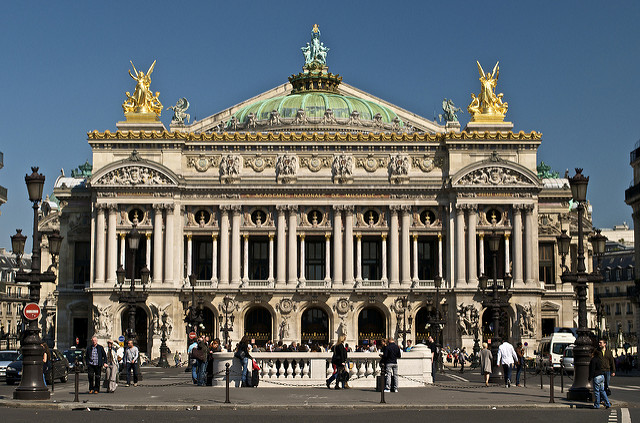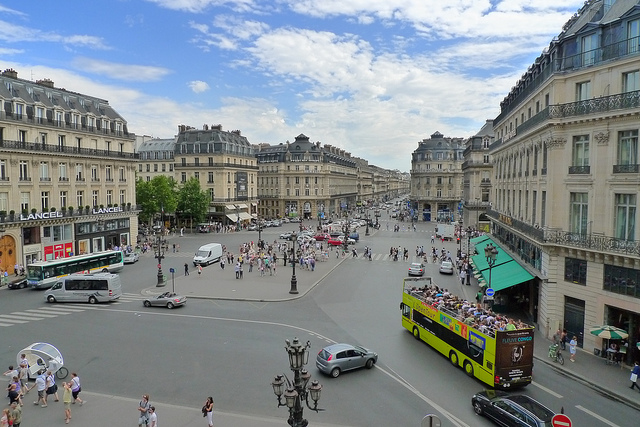Music At The Opéra Garnier Posted by John Bauer on May 17, 2017 in Culture
Now that I am settled in I have time to explore the sights and sounds of Paris. La ville lumière (the city of lights) is a massive international hub with history pouring out of every corner. Walking down any street can lead to amazing sights and new experiences.
L’autre jour (the other day), I was walking around le quartier Gaillon (the Gaillon quarter) and decided to take a look at the famous opéra Garnier.
I only knew about l’Opéra because of l’arrêt de métro (the subway stop) and had never gone out of my way to visiter (visit). Since I had the time, I decided to learn l’histoire de l’Opéra (the history of the Opera) and finally see l’édifice (the building).
L’histoire de l’Opéra begins with Napoléon III who decided to create a new « Academie imperial de musique et de danse » (Imperial Academy of Dance and Music) after un attentat (an attack) in 1858 nearly took his life at the old Opéra de Paris. Napoléon III held un concours (a competition) to see who could come up with the best design for le nouvel opéra.
Charles Garnier is l’architecte français (the French architect) who won le concours, and even though the entrants were anonymous, la devise (the motto) that Charles put on his design may have helped give him an advantage:
J’aspire à beaucoup, j’attends peu
I aspire to a lot, I wait for little
L’édifice was known as l’Opéra de Paris for most of its existence, but in 1989 un nouvel opéra opened à Paris, l’opéra Bastille. In order to avoid confusion, the older structure has since been referred to as l’opéra Garnier or palais Garnier.
L’opéra Garnier is located la place de l’Opéra, a public square en face de (in front of) l’opéra. From les marches de l’Opéra (the steps of the Opéra) you get a nice view of la place de l’Opéra.
Malheureusement (unfortunately), it was already too late when I visited and l’Opéra was closed, but I still wanted to explore. I noticed a crowd on les marches de l’opéra and decided to see why everyone was gathering there. There was un musicien des rues (a busker) playing for the crowd at la place de l’opéra!
De plus (what’s more), le musicien was catering to the international tourists. He played les chansons françaises (French songs) and invited people from the audience to sing songs with him. Amazingly he knew popular songs from nearly every country and could even sing them in the right languages for les touristes!
Dans l’ensemble (all in all), it was a fun way to experience l’opéra Garnier. I didn’t get a chance to go inside l’Opéra, but I was able to hear de la musique!

Build vocabulary, practice pronunciation, and more with Transparent Language Online. Available anytime, anywhere, on any device.





